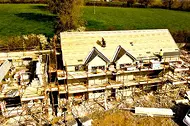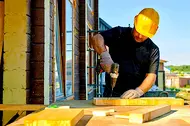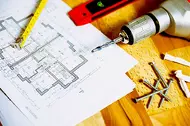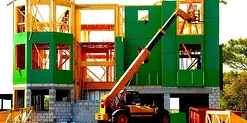5 Build Methods to Consider for Your New Zealand Home
 By
Trent Bradley
·
8 minute read
By
Trent Bradley
·
8 minute read
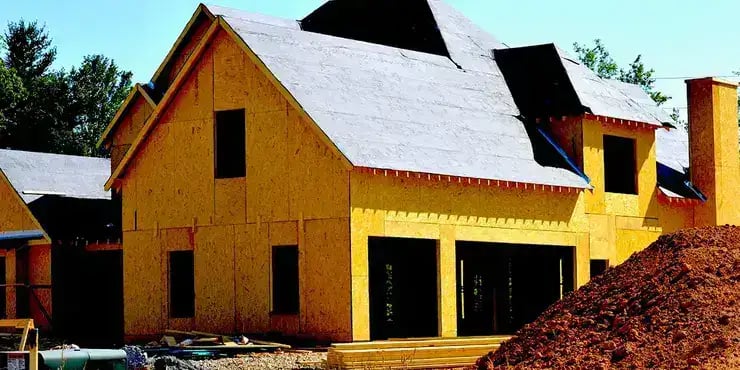
Planning to build your dream home in New Zealand? With so many different types of home builds available, choosing the right construction method can feel overwhelming. From traditional stick-built homes to innovative prefabricated systems, each approach offers unique advantages and considerations that could significantly impact your budget, timeline, and final result.
Table of Contents:
- Traditional Stick-Built Homes
- Prefabricated (Prefab) Homes
- Turnkey Package Homes
- Owner-Builder (Self-Build) Projects
- Hybrid Build Approaches
- Regional Considerations for New Zealand Builds
- Financing Different Build Types
- Making the Right Choice for Your Situation
- Related Reading: Construction Financing Guide
- Getting Expert Guidance
- Frequently Asked Questions
Key Takeaways
- Traditional stick-built homes offer maximum customisation but take 6-12 months, while prefab construction completes site assembly in weeks with factory precision
- Turnkey packages provide single-point accountability and fixed-price contracts, ideal for first-time builders prioritising convenience over complete control
- Owner-builder projects can save 15-25% on costs by eliminating builder margins but require significant time, construction knowledge, and project management expertise
- Hybrid approaches combine strengths of multiple methods—prefab frames with custom interiors balance speed, cost, and personalisation effectively
- Wellington's seismic requirements favour engineered solutions, while Auckland's land costs make efficient construction methods financially attractive
- Construction financing availability varies by method—traditional builds have most lender options, owner-builder projects face stricter requirements
Understanding the various build methods available in New Zealand's construction market is crucial for making an informed decision that aligns with your lifestyle, budget, and timeline. Whether you're looking for maximum customisation, fastest completion, or best value for money, there's likely a build method that fits your specific needs.
Let's explore the five most popular home building approaches in New Zealand, examining what makes each unique and who they're best suited for.
1. Traditional Stick-Built Homes
Traditional stick-built construction remains the most common type of home build in New Zealand, representing the classic approach to residential construction that has been refined over decades.
How It Works
Stick-built homes are constructed entirely on-site using individual pieces of timber framing, creating a custom structure from the ground up. The process involves laying foundations, erecting the timber frame, adding roofing, cladding, and then completing all interior work on location.
Advantages of Traditional Building
Maximum Customisation: Every aspect of your home can be tailored to your exact specifications, from room layouts to architectural details. Changes can be made during construction, though this may impact costs and timelines.
Local Trades and Materials: Traditional builds typically use local contractors and suppliers, supporting the regional economy and ensuring familiarity with local building codes and climate considerations.
Proven Track Record: This method has the longest history in New Zealand, with established processes, skilled tradespeople, and well-understood timeframes.
Financing Familiarity: Most banks and lenders have extensive experience with traditional construction loans, potentially making financing more straightforward.
Considerations
Traditional builds typically take 6-12 months to complete and can be more susceptible to weather delays. Costs can vary significantly based on design complexity and material choices, and project management requires active involvement throughout the construction process.
Best Suited For
Families wanting maximum customisation, those building on challenging sites, and homeowners with specific architectural requirements or accessibility needs.
2. Prefabricated (Prefab) Homes
Prefabricated construction has gained significant traction in New Zealand as technology and manufacturing processes have improved, offering a modern alternative to traditional building methods.
How It Works
Major components or entire sections of your home are manufactured in a controlled factory environment, then transported to your site for assembly. This can range from modular sections to complete wall panels with windows and insulation already installed.
Advantages of Prefab Construction
Speed of Construction: Site assembly typically takes weeks rather than months, as much of the work is completed in the factory while site preparation occurs simultaneously.
Quality Control: Factory construction occurs in controlled conditions, reducing weather-related delays and ensuring consistent quality standards.
Reduced Waste: Precise manufacturing processes minimise material waste, making prefab an environmentally conscious choice.
Predictable Costs: Factory production allows for more accurate cost estimation and reduced risk of budget overruns.
Considerations
Design flexibility may be limited compared to traditional builds, though many prefab companies now offer extensive customisation options. Transportation costs and site access requirements can add complexity, particularly in remote locations.
Best Suited For
Time-conscious builders, environmentally conscious homeowners, and those seeking predictable budgets and timelines.
3. Turnkey Package Homes
Turnkey building represents a comprehensive approach where a single company manages every aspect of your home construction from initial design through to final handover.
How It Works
A turnkey provider handles everything: design, consents, construction, and often even interior fit-out. You typically choose from a range of standard plans with customisation options, and the company coordinates all trades and suppliers.
Advantages of Turnkey Building
Single Point of Contact: One company manages the entire process, reducing coordination stress and communication complexity.
Fixed Price Contracts: Many turnkey builders offer fixed-price contracts, providing budget certainty from the start.
Streamlined Process: Established systems and relationships with suppliers and trades can accelerate timelines.
Warranty Coverage: Single-source responsibility often means comprehensive warranty coverage for the entire home.
Considerations
Design choices may be more limited than fully custom builds, and you'll have less direct control over individual trade selections. The success of your project heavily depends on choosing a reputable turnkey provider.
Best Suited For
First-time builders, busy professionals who prefer minimal involvement, and those prioritising convenience and fixed pricing over maximum customisation.
4. Owner-Builder (Self-Build) Projects
Owner-building allows you to take direct control of your home construction, either doing work yourself or managing subcontractors directly.
How It Works
As an owner-builder, you obtain the building consent in your name and take responsibility for managing the construction process. This can involve doing physical work yourself, hiring and coordinating individual trades, or a combination of both approaches.
Advantages of Self-Building
Cost Savings: Eliminating builder margins and doing some work yourself can significantly reduce total project costs.
Complete Control: Direct oversight of every decision, from material selection to workmanship standards.
Personal Satisfaction: The satisfaction of creating your family home with your own hands and vision.
Learning Experience: Gaining valuable skills and knowledge about home construction and maintenance.
Considerations
Owner-building requires significant time commitment, construction knowledge, and project management skills. You're responsible for quality control, safety compliance, and coordinating multiple trades. Financing can be more complex, as some lenders are hesitant to fund owner-builder projects.
Best Suited For
Experienced DIY enthusiasts, those with construction backgrounds, people with flexible schedules, and families prioritising maximum cost savings over convenience.
5. Hybrid Build Approaches
Many successful New Zealand home builds combine elements from different construction methods, creating hybrid approaches that maximise benefits while minimising drawbacks.
Common Hybrid Combinations
Prefab Frame with Traditional Fit-Out: Using prefabricated structural components while maintaining flexibility in interior finishes and fixtures.
Turnkey Structure with Owner-Completed Interiors: Having professionals complete the weather-tight shell while taking on interior work yourself.
Traditional Build with Prefab Elements: Incorporating prefabricated components like roof trusses or bathroom pods into otherwise traditional construction.
Advantages of Hybrid Approaches
Hybrid methods can optimise cost, timeline, and customisation by leveraging the strengths of different construction approaches. They allow you to participate where you're most capable while leaving complex work to professionals.
Best Suited For
Builders wanting to balance involvement with professional expertise, those with specific skills to contribute, and families seeking optimal cost-effectiveness.
Regional Considerations for New Zealand Builds
Different regions across New Zealand present unique challenges and opportunities for various build methods.
Auckland and Urban Areas
High land costs make efficient construction methods attractive, while strict council requirements favour experienced builders familiar with local processes. Transport access for prefab components is generally excellent.
Wellington and Seismic Zones
Wellington's earthquake risk requires specific engineering considerations that some build methods handle better than others. Traditional and engineered prefab systems typically perform well.
Rural and Remote Locations
Access challenges for prefab transportation might favour traditional or owner-builder approaches. Local trade availability can influence method selection.
South Island Considerations
Different climate conditions and material availability might make certain build methods more practical or cost-effective.
Financing Different Build Types
Construction financing varies significantly between build methods, affecting both availability and terms.
Traditional builds typically have the most financing options, while owner-builder projects may face more scrutiny. Prefab and turnkey builds often qualify for standard construction loans, but lenders may have specific requirements for each approach.
Understanding how different build methods affect your financing options is crucial for making an informed decision that works within your budget and timeline.
Making the Right Choice for Your Situation
Selecting the optimal build method depends on numerous factors specific to your situation:
- Timeline requirements and flexibility
- Budget constraints and risk tolerance
- Desired level of personal involvement
- Customisation priorities
- Site location and accessibility
- Local trade availability
- Financing options and requirements
Each build method offers distinct advantages, but the "best" choice varies dramatically based on your specific circumstances, priorities, and resources.
Related Reading: Construction Financing Guide
Explore more aspects of building your home in New Zealand:
Decision Making & Planning
- Should I Build or Buy a Home in New Zealand? - Compare building versus purchasing an existing property
- How to Secure Land for Your Dream Home in NZ - Navigate land purchase and site assessment
- How to Navigate Code Compliance When Building Your NZ Home - Understand consents and building regulations
Budget & Cost Management
- The True Cost of Building a House in New Zealand - Comprehensive breakdown of building expenses by method
- Secrets to Budgeting Your Home Build Without Breaking the Bank - Cost control strategies for every build type
- Construction Loans vs Home Loans: Which Is Right for You? - Financing options across different build methods
Contracts & Risk
- Fixed Price or Cost Plus: Choosing the Right Building Contract - Contract structures for traditional and turnkey builds
- Top Mistakes to Avoid When Building Your Home in New Zealand - Common pitfalls across all build methods
- Why You Might Need a Financial Advisor When Building Your Home - Professional guidance for complex build decisions
Getting Expert Guidance
While understanding these different types of home builds provides a foundation for decision-making, choosing the right method for your specific situation requires careful evaluation of multiple factors including financing implications, local regulations, and long-term goals.
Making the wrong choice can cost tens of thousands of dollars and months of delays, while the right decision can save money, reduce stress, and deliver exactly the home you're envisioning.
If you're ready to explore which build method aligns best with your goals and circumstances, contact Luminate Finance today. Our team specialises in construction-to-permanent financing across all build types and can help you understand both the construction and financial implications of each approach.
Ready to turn your building dreams into reality? Whether you're considering traditional construction, prefab, or any other build method, having the right financial partner makes all the difference. Reach out to Luminate Finance to discuss how we can support your New Zealand home building journey with tailored construction-to-permanent financing solutions.
Frequently Asked Questions
Which build method is fastest in New Zealand?
Prefabricated homes are fastest, with site assembly completing in 4-8 weeks compared to 6-12 months for traditional builds. Turnkey packages typically complete in 4-6 months. However, prefab speed advantages depend on factory scheduling and site preparation occurring simultaneously. Traditional builds in Wellington with complex engineering requirements may extend to 12-18 months. Owner-builder timelines vary dramatically based on your availability and experience—some take 18+ months working weekends.
Can I get a mortgage for an owner-builder project in NZ?
Yes, but with stricter requirements. Most banks require evidence of construction experience, detailed project plans, fixed-price quotes from trades, and quantity surveyor reports. Expect 20-30% deposit minimums versus 10-20% for traditional builds. Some lenders won't finance owner-builders at all. Construction-to-permanent loans for owner-builders have higher interest rates during building (typically 1-2% above standard construction loans) and require milestone inspections before releasing funds. Working with mortgage brokers experienced in owner-builder financing is essential.
How much cheaper is prefab compared to traditional building in New Zealand?
Prefab homes typically cost 5-15% less than equivalent traditional builds due to reduced labour, minimal weather delays, and efficient material use. A $600,000 traditional build might cost $510,000-$570,000 as prefab. However, transportation costs to remote sites can eliminate savings. Auckland prefab projects save most due to high labour costs. Prefab customisation reduces cost advantages—highly customised prefab may match traditional pricing. Factor in faster completion saving interim accommodation costs (potentially $15,000-$30,000 for 6 months rent avoided).
What's the difference between turnkey and traditional building contracts?
Turnkey contracts provide single-company accountability for design, consents, construction, and fit-out with fixed pricing covering everything from foundations to doorknobs. Traditional contracts typically separate design (architect), consent management, and construction, requiring you to coordinate multiple parties. Turnkey offers convenience and price certainty but less flexibility—changes cost significantly more. Traditional allows switching contractors mid-project and granular cost control but requires active management. Turnkey works best for standard designs; traditional suits unique architectural requirements or challenging sites.
Are hybrid build methods more expensive than single-method approaches?
Hybrid methods can be more cost-effective by optimising each construction phase. Using prefab frames (saving 4-6 weeks) while doing your own interior fit-out (saving 15-20% on finishes) combines speed and savings. However, coordination complexity between different contractors can add costs if not managed well. Successful hybrids require clear contracts defining responsibility boundaries. Example: prefab shell ($400,000) plus owner-completed interiors ($80,000 in materials, your labour) versus turnkey ($550,000) saves $70,000 but requires 6-12 months of your weekends.

Trent Bradley
Trent Bradley is a New Zealand financial advisor specializing in property-backed finance and investment consulting. With over 26 years of experience running his mortgage broking business, he has helped wholesale investors access high-yield property-backed loan opportunities. For the past 12 years, Trent has led Luminate Finance, a New Zealand finance company dedicated to connecting investors with secure property investment solutions.

